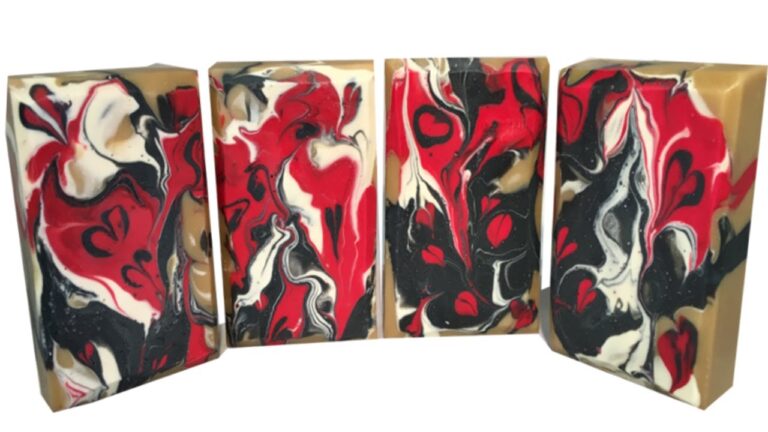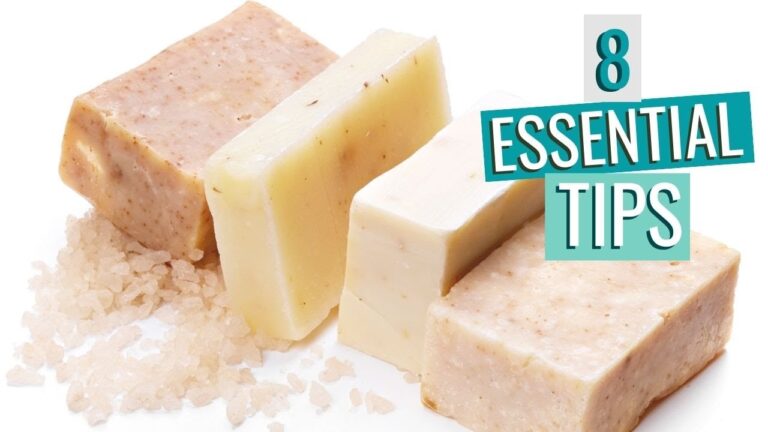Looking for a natural and sustainable alternative to commercial soaps? Look no further than handmade soap crafted with regional resources. By using locally sourced ingredients, such as herbs, oils, and botanicals, artisans are creating unique and eco-friendly products. Not only are these soaps gentle on the skin, but they also support local economies and promote a more sustainable way of living. Discover the beauty of handmade soap and the benefits of utilizing regional resources for a truly luxurious and environmentally conscious bathing experience.
What is the best place to sell handmade soap?
Craft shows and farmers’ markets are ideal places to sell handmade soap, attracting customers who appreciate unique, artisanal products. Another option is to consider opening your own brick-and-mortar store in the future. To ensure smooth transactions, it is essential to have a POS system in place, along with software that can effectively manage inventory across both online and offline sales channels.
Who is the target audience for handmade soap?
The target audience for handmade soap typically includes individuals who prioritize natural products and care about what they put on their skin. Mothers, in particular, who are looking for high-quality skincare options for their children and families are a key demographic. With a focus on ingredients that are gentle and nourishing, handmade soap appeals to those who value health and wellness.
Women around the age of 30 are often drawn to handmade soap, as they are more likely to invest in products that promote self-care and overall well-being. This demographic is willing to spend a little extra for products that are made with care and attention to detail. Handmade soap businesses cater to this audience by offering unique and luxurious options that stand out from mass-produced alternatives.
Overall, the target audience for handmade soap consists of individuals who appreciate the craftsmanship and authenticity of artisanal products. These consumers value quality over quantity and are willing to support small businesses that prioritize natural ingredients and sustainable practices. By appealing to this niche market, handmade soap businesses can build a loyal customer base that values the care and dedication put into each product.
Is there a demand for handmade soap?
Handmade soap has carved out a niche market for itself, with a growing demand for natural and artisanal products. The global Handmade Soap market is projected to see significant growth, with a forecasted expansion at a CAGR of 5.94% from 2023 to 2031. This indicates a strong market potential for handmade soap products.
Consumers are increasingly drawn to handmade soap for its unique qualities and natural ingredients. The market for handmade soap is expected to reach USD 224.45 million by 2031, highlighting the steady growth and popularity of these products. With a focus on quality, craftsmanship, and sustainability, handmade soap appeals to a diverse range of consumers seeking a more personalized and environmentally-friendly alternative to mass-produced options.
Entrepreneurs and artisans in the handmade soap industry have a promising future ahead, as the demand for these products continues to rise. With a market size of USD 158.79 million in 2023, handmade soap makers have ample opportunities to capitalize on this growing trend. As consumers become more conscious of what they put on their skin, handmade soap offers a compelling choice for those seeking natural, luxurious, and eco-friendly skincare options.
Unleash Your Creativity: Crafting Handmade Soap with Regional Ingredients
Unleash your creativity and indulge in the art of crafting handmade soap using regional ingredients. Embrace the natural beauty and unique qualities of local resources as you blend, mold, and scent your own personalized soaps. From fragrant lavender fields to rich olive groves, let the essence of your surroundings inspire your creativity as you master the delicate and rewarding process of soap making. Whether it’s for personal use or gifting, handcrafted soaps offer a truly special and sustainable way to cleanse and nourish the skin while celebrating the diverse bounty of your region.
From Nature to Nurture: Exploring Regional Resources in Handmade Soap Making
Discover the art of handmade soap making with our range of natural ingredients sourced from regional resources. From fragrant herbs to nourishing oils, our products are crafted with care to provide a luxurious bathing experience. Embrace the beauty of nature in every lather and indulge in the benefits of pure, chemical-free skincare.
Experience the transformative power of botanicals and essential oils in our handmade soaps, each uniquely crafted to pamper your skin. Our commitment to using locally sourced ingredients ensures that you are not only getting a high-quality product, but also supporting sustainable practices. Let the scents of the forest, fields, and gardens transport you to a place of serenity and rejuvenation.
Join us on a journey from nature to nurture as we explore the rich abundance of regional resources in handmade soap making. From the lush landscapes to the skilled hands of our artisans, every bar is a testament to the beauty and efficacy of natural skincare. Treat yourself to a truly indulgent experience and feel the difference that comes from using products that are as gentle on the earth as they are on your skin.
Incorporating locally sourced ingredients into handmade soap not only supports the community, but also ensures a high-quality, environmentally-friendly product. By harnessing the natural resources of the region, soap makers can create unique and sustainable products that appeal to consumers looking for authentic, small-batch goods. Embracing the use of regional resources in soap making not only adds value to the final product, but also promotes a sense of connection and stewardship for the land and communities that provide these ingredients.



